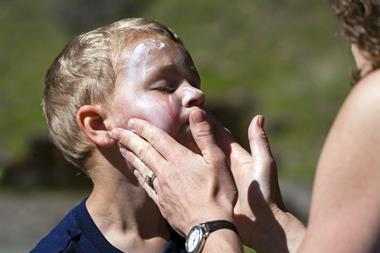Frank Sauer claimed to be the victim of sabotage, despite being found responsible for falsifying data and images
Fresh insight into a research misconduct case involving Frank Sauer, a former associate professor of biochemistry at the University of California, Riverside, US, has emerged after the scientific integrity blog Retraction Watch obtained and shared the university’s investigation report following a public records request.
The 109 page document charts the institution’s year-long investigation between October 2011 and October 2012 into the misconduct, which triggered multiple journal retractions, fantastical claims of revenge and conspiracy, and ultimately the barring of Sauer from US government funding and advisory roles until 2020.

According to the report, Sauer’s past began to catch up with him on 3 October 2011 when the head of UC Riverside received an anonymous email detailing 26 individual allegations of data falsification and fabrication in eight research papers spanning a sixteen-year period. The only author common to them all was Sauer. The report reveals that the emailer had sent the allegations to twenty others, including chief editors of Science and Nature, directors of US government funding agencies and labs associated with the research in question.
Ten days later, Sauer was hunting down old notebooks and research materials under the instruction of a UC Riverside research integrity officer (RIO) while an outsourced data forensics company, Calforensics, seized his laptop and his lab’s computers for analysis.
Dodgy duplications
The allegations focussed on doctored images, accusing Sauer of splicing gel band images without declaring the edits and reusing images in different figures involving different experiments, sometimes in different papers.
During the investigation seven additional allegations were added, two by the committee when, during the course of the investigation, they found two further discrepancies not flagged by the whistleblower, and the rest when Science informed the committee of more suspect images in a 2004 Science paper1 already being looked at.
Image manipulation was blatant but only if you looked carefully
Jeffrey Kovac
Of the 33 allegations, 20 were proved to be acts of misconduct by Sauer, representing a pattern of falsifying and fabricating research data in five papers and grant applications spanning ten years, sometimes committed intentionally and knowingly, and at the very least recklessly, the report says.
‘One of the critiques of peer review is that it is very difficult to catch fraud if it is well done,’ says Jeffrey Kovac, a physical chemist and research ethicist at the University of Tennessee, Knoxville, US. ‘In this case the image manipulation was blatant but only if you looked carefully.’ Kovac suggests that misconduct probably went undetected for so long because most readers would not have looked that closely.
The aftermath
After the investigation Science retracted two papers in 2014 – the one from 2004 and another from 20062 - in which Sauer’s data manipulation had been uncovered. Two more papers were retracted in 2015; one a 2011 paper3 in Molecular Cell, and the other a 2002 research letter4 in Nature.
The National Science Foundation – which awarded Sauer almost $600,000 (£460,000) in 2005 – conducted a further enquiry and ultimately banned Sauer from receiving federal grants for five years beginning July 2015.
In another investigation, the Office of Research Integrity at the Department of Health and Human Services, parent agency of the National Institutes of Health – who had given Sauer nearly $3 million in funding – concluded that Sauer was guilty of research misconduct in seven grant applications and three papers – the two retracted Science papers and a 2010 PLOS ONE paper.5 The ORI banned Sauer from serving in any advisory capacity to the Public Health Service until 2020.
Even once he’d been caught, Sauer did everything possible to hold on while in the death throes of his career
Paul Bracher
Yet in a bizarre twist, Sauer challenged the ORI verdict in court in May this year by providing a notarised document purportedly written by a mysterious German called Rune Dreser. In it, ‘Dreser’ admitted hacking Sauer’s computers to falsify his data as part of an anti-gene technology activist group, and Sauer argued that he had been a victim of sabotage. The document’s authenticity was found to be dubious, and regardless of its veracity the judge upheld the ORI’s original verdict because even if Sauer hadn’t doctored the images himself, he had already admitted being responsible for publishing them.
‘It is incredible that even once he’d been caught, Sauer did everything possible to hold on while in the death throes of his career,’ comments Paul Bracher, a chemist at the University of St Louis, US, who runs the blog ChemBark, which covers ethical issues in research. Bracher thinks that Sauer’s punishment falls short. ‘A shoplifter gets arrested; scientific fraudsters just get disbarred from federal funding for a few years. It’s ridiculous. Sauer should be in prison,’ he says.
Kovac wonders what motivated Sauer to fabricate data in the first place. ‘When some of the fabrication took place, he was still untenured. Young faculty, particularly in the biomedical sciences are under enormous pressure to produce articles and to obtain external funding.’ Kovac says. ‘My suspicion is that the pressure often motivates scientists to cut corners, to embellish their results, but only rarely do they do what Sauer did, which is to make stuff up.’
References
- T Maile et al, Science, 2004, 304, 1010 (DOI: 10.1126/science.1095001)
- T Sanchez-Elsner et al, Science, 2006, 311, 1118 (DOI: 10.1126/science.1117705)
- S Bertani et al, Molecular Cell, 2011, DOI: 10.1016/j.molcel.2011.08.019
- C Beisel et al, Nature, 2002, 419, 857 (DOI: 10.1038/nature01126)
- D Gou et al, Plos One, 2010, DOI: 10.1371/journal.pone.0010581











No comments yet